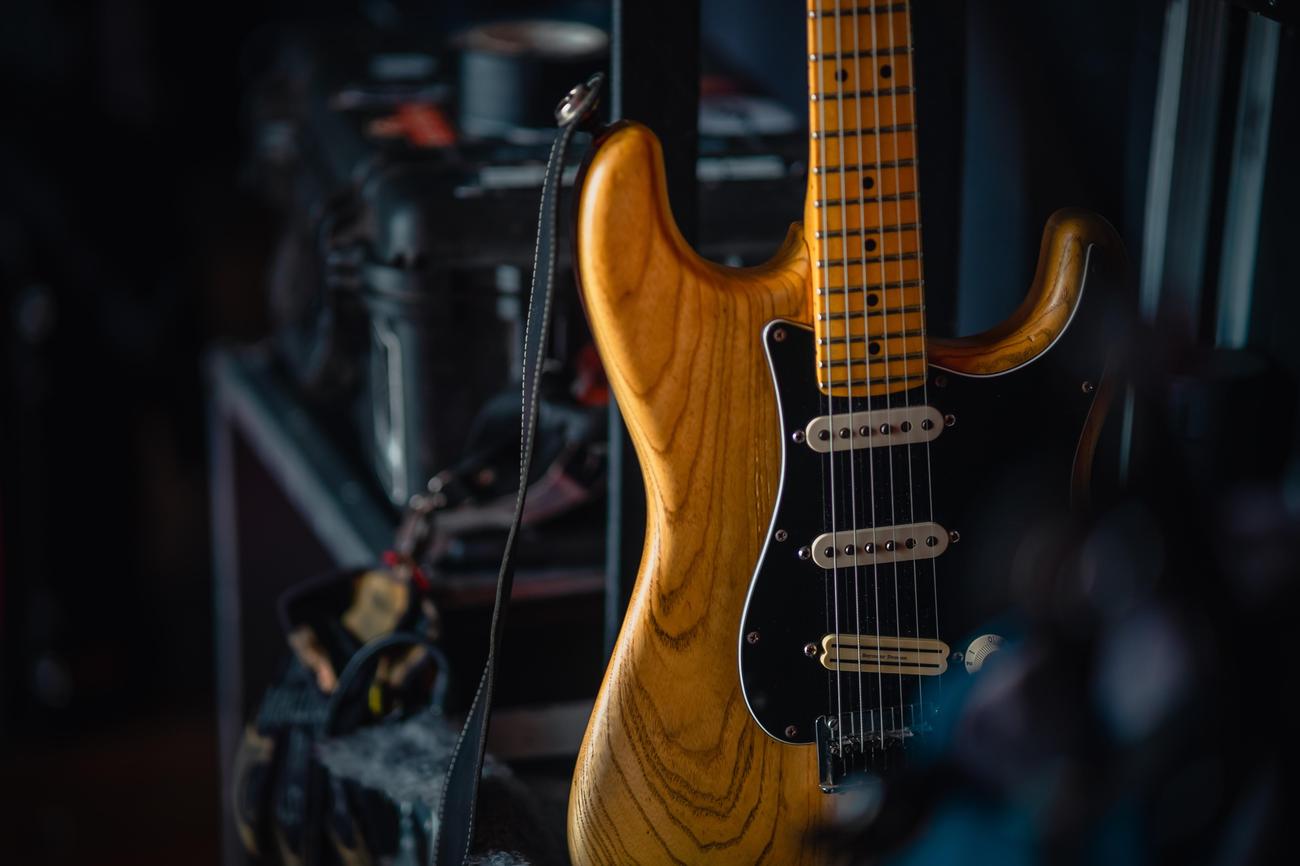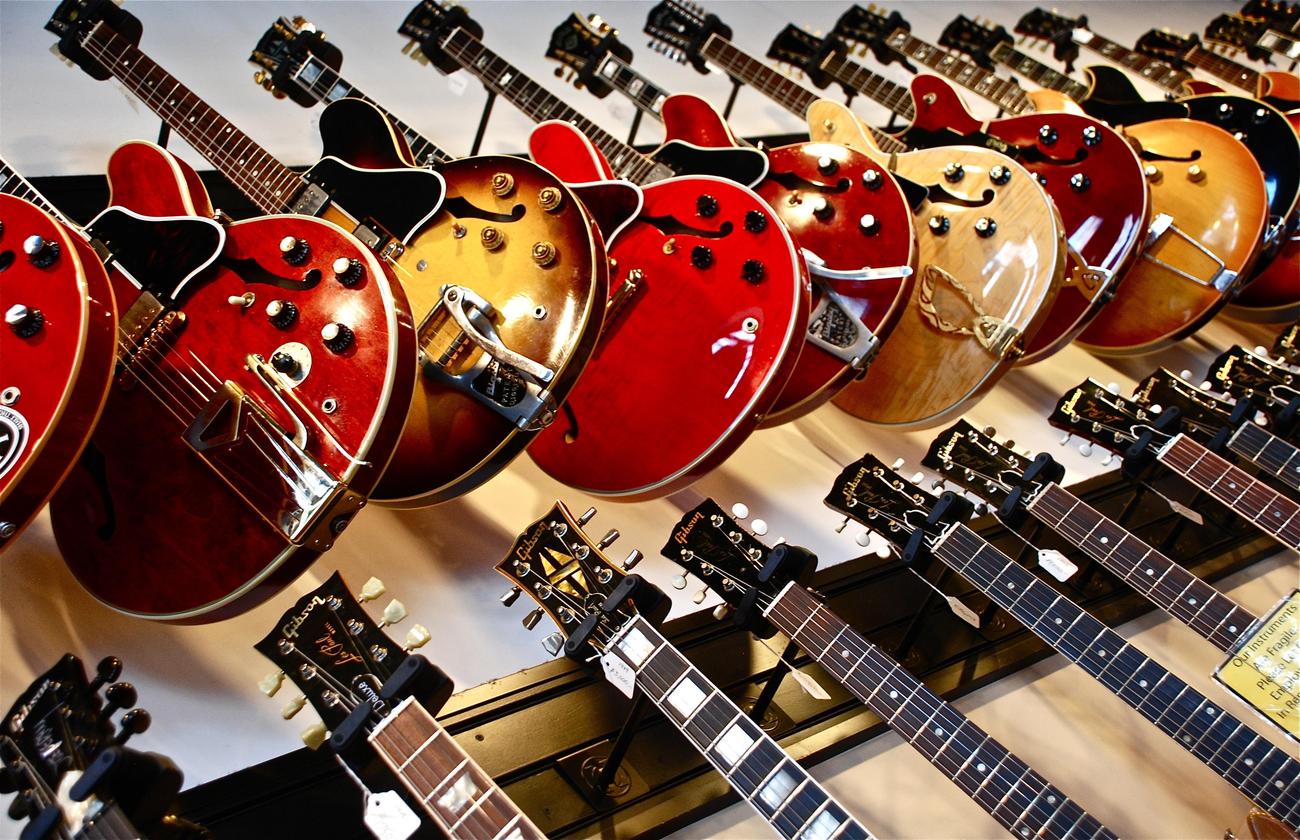Are you ready to dive into the world of electric guitars and uncover some fascinating secrets? In this article, we will unveil 10 mind-blowing facts about these iconic instruments that will leave you amazed. Whether you’re a guitar enthusiast or simply curious about the history and technical aspects of electric guitars, this is the perfect read for you. From legendary players to groundbreaking advancements, get ready to be captivated by the intriguing world of electric guitars.

10 Facts About Electric Guitars
Electric guitars have completely revolutionized the music industry, becoming an iconic symbol of rock and roll. From their unique construction to the legendary musicians who have wielded them, electric guitars hold a wealth of fascinating secrets. In this article, we will explore 10 facts about electric guitars that will leave you amazed and inspired.
1. Diamonds and Gold: The World’s Most Expensive Electric Guitar
Did you know that the most expensive non-vintage electric guitar is a diamond and gold encrusted Gibson SG? Valued at a staggering $2 million USD, this guitar is a true work of art. With its exquisite craftsmanship and precious materials, it stands as a testament to the sheer luxury and elegance electric guitars can embody.
“This guitar takes luxury to a whole new level, turning an already incredible instrument into a breathtaking masterpiece.”
2. The Unreleased 7-String Guitar
While many guitarists are familiar with 6-string guitars, Fender once developed a 7-string guitar in the 1980s. Surprisingly, this innovative instrument was never released to the public. Although the 7-string guitar has since gained popularity in genres like metal and jazz, Fender’s original design remains a hidden gem among guitar enthusiasts.
“Imagine the possibilities of that extra string, pushing the boundaries of what a guitar can do.”
3. The Pioneering Fender Esquire and Broadcaster
The first Fender guitar, built in 1949, served as the prototype for two legendary models: the Esquire and the Broadcaster. However, due to a trademark dispute with Gretsch, Fender temporarily had to remove the name “Broadcaster” from their guitars, leading to a short-lived production run of guitars labeled as “Nocasters.” Eventually, the “Telecaster” name was coined, solidifying its place in guitar history.
“The birth of the Esquire and the Broadcaster marked the beginning of a new era for electric guitars, forever shaping the landscape of modern music.”
4. Frets: A Pitch-Perfect Journey
Electric guitars typically come with 21, 22, or 24 frets, allowing players to explore a wide range of musical possibilities. Each fret, positioned closer to the body, raises the pitch by a semitone. Whether you’re shredding a blistering solo or strumming delicate chords, the fretboard becomes a musical map for your fingers to traverse.
“As your fingers navigate the fretboard, each fret becomes a stepping stone, guiding you to the desired pitch.”
5. The Non-Guitarist Founder
Surprisingly, Leo Fender, the visionary founder of Fender guitars, never learned how to play the instrument himself. Instead, his focus was on engineering and innovation. By approaching guitar design from an outsider’s perspective, Fender was able to revolutionize the industry, creating instruments that would go on to define the sound of popular music.
“Fender’s lack of guitar-playing experience allowed him to think outside the box, challenging conventions and pushing the boundaries of what a guitar could be.”
6. Les Paul: The Innovator Extraordinaire
Les Paul, the inventor of the solid-body electric guitar, left an indelible mark on the world of music. Not only did he revolutionize guitar design, but he also pioneered multitrack recording and overdubbing techniques. His contributions to both playing and recording earned him a rightful place among the greatest innovators in music history.
“Les Paul’s genius extended far beyond the instrument itself, shaping the way music is created and produced.”
7. Clapton’s Record-Breaking Sale
Eric Clapton’s “Blackie” guitar holds a special place in rock and roll history. In 2004, this legendary instrument was sold at auction for an astonishing $959,500, making it the most expensive guitar ever sold. The combination of Clapton’s masterful playing and the instrument’s iconic status created an undeniable allure that collectors could not resist.
“The mesmerizing sound of ‘Blackie’ merged with Clapton’s virtuosity, making it a piece of music history that fetches a price fit for a king.”
8. Brian May’s Homemade Marvel
Before becoming the iconic guitarist of Queen, Brian May constructed his own guitar with the help of his father. Using wood from a fireplace, May created a unique instrument that would become his signature sound. This remarkable DIY approach illustrates the boundless creativity and resourcefulness that can be found in the world of electric guitars.
“May’s homemade guitar became more than an instrument; it became an extension of his musical identity, capturing the essence of his unique talent.”
9. A Drummer Turned Amplifier Legend
Jim Marshall, the genius behind Marshall amps, began his musical journey as a drummer and drum teacher. His passion for music expanded beyond percussion, leading him to develop the iconic amplifiers that shaped the sound of countless guitarists. Marshall’s legacy proves that true innovation can spring from unexpected beginnings.
“Marshall’s transition from drummer to amplifier guru speaks volumes about the transformative power of passion and dedication in the pursuit of musical excellence.”
10. The Stratocaster: A Legend in Its Own Right
The Fender Stratocaster stands as an emblem of versatility and innovation in the world of electric guitars. Used by legendary musicians such as Jimi Hendrix, David Gilmour, and Stevie Ray Vaughan, this iconic instrument has cemented its place in music history. Its distinctive shape and versatile sound have become synonymous with the electric guitar itself.
“The Stratocaster’s chameleon-like ability to adapt to any musical genre has made it an irreplaceable companion for countless guitarists, allowing their creative visions to come to life.”
These 10 facts about electric guitars offer a glimpse into the captivating world of these remarkable instruments. From their extravagant designs to the influential individuals who have shaped their evolution, electric guitars continue to captivate musicians and enthusiasts alike. So next time you pick up your guitar, remember the rich history and endless possibilities that lie within its strings.
“The secrets of electric guitars unfold before us, inviting us to explore the depths of musical expression.”
Guitars have been captivating musicians for centuries with their melodic sounds and versatility. If you’re a music lover and are hungry for interesting facts about guitars, then you’re in for a treat! Check out our informative article on the fascinating world of guitars, where you’ll uncover a treasure trove of knowledge. From the evolution of guitar styles to famous guitarists who have left an indelible mark in the music industry, this article has it all. So, what are you waiting for? Dive deep into the captivating world of guitars by clicking here: facts about guitars. Let the journey begin!
10 Facts About Electric Guitars
If you are a music enthusiast or simply curious about music instrument knowledge, you will be amazed by these electric guitar facts. Did you know that electric guitars have revolutionized the music industry? With their unique sound and versatility, they have become an essential part of every musician’s arsenal. From the invention of the first solid-body electric guitar to the various techniques used by famous electric guitar players, there is so much to explore. Click here to dive into the world of electric guitar facts and uncover the secrets behind these iconic instruments: electric guitar facts
Among the many talented musicians who have mastered the art of playing the electric guitar, there are a few names that stand out. These famous electric guitar players have not only pushed the boundaries of what can be achieved with this instrument but have also inspired generations of musicians. Whether it’s the soulful blues of B.B. King, the mesmerizing solos of Jimi Hendrix, or the hard-rocking riffs of Eddie Van Halen, their contributions to music are unparalleled. Discover more about these legendary guitarists and their mastery of the electric guitar: famous electric guitar players
As you immerse yourself in the world of electric guitars, you will realize that there is always something new to learn. Music instrument knowledge is not limited to just playing notes, but also understanding the technical aspects of these instruments. From the different types of pickups to the various body styles, each element plays a crucial role in shaping the sound of an electric guitar. Expand your music instrument knowledge with our comprehensive guide and discover the inner workings of these fascinating instruments: music instrument knowledge
With so much to explore, you don’t want to miss out on these captivating facts, inspiring guitarists, and in-depth knowledge about electric guitars. So, click on the links above and get ready to embark on an exciting journey into the world of electric guitars.
Electric Guitar Technology Unveiled
[youtube v=”QH-IAPkgV2A”]
How an Electric Guitar Works: Explained in 2 Minutes
An electric guitar may seem like a mystery to those unfamiliar with its inner workings. In this article, we will unveil the technology behind this iconic instrument, presenting a simplified explanation of how it produces its unique sound. Let’s dive in and explore the fascinating world of electric guitars.
Transforming Vibrations into Sound
Unlike regular guitars, electric guitars are equipped with metal or ferrous strings. Positioned behind each string lies a magnet surrounded by a coil, collectively known as a pickup. When a string is struck, it vibrates the air around it, creating sound waves that we perceive as music.
But here’s where electric guitars differ: the metal strings, being magnetized, cause a change in the surrounding magnetic flux when vibrating. This alteration generates an electric current through the coils connected to the guitar pickup. Essentially, the vibrations are transformed into an electric signal.
“When the magnetic field changes, an electric current is produced, facilitating the unique workings of an electric guitar.”
The Amplification Process
The generated electric signal then travels through a wire connected to the guitar pickup. This wire carries the electric waveform, which represents the original string strike. The signal is then fed into an amplifier, a crucial component that increases its size or amplitude.
Once amplified, the signal passes through to a speaker, which radiates the distinct sound that we associate with an electric guitar. Whether it’s a soulful blues solo or a powerful rock riff, the amplifier and speaker play a vital role in delivering the music to our ears.
“The electric signal, modified for sound, is amplified, ensuring the unique sound we hear from an electric guitar is adequately projected.”
The Principle of Electromagnetic Induction
At the core of an electric guitar’s functioning lies the principle of electromagnetic induction. Thanks to the discoveries made by Michael Faraday, the changing magnetic field caused by the vibrating strings is converted into an electric current, enabling the creation of music.
“Electromagnetic induction is the main principle guiding the workings of an electric guitar, proving its fundamental importance in the innovative design of this instrument.”
In a nutshell, when a string is struck on an electric guitar, the resulting vibrations interact with the magnetized metal strings and produce changes in the surrounding magnetic field. This alteration, in turn, generates an electric current that is eventually converted into the music we love.
Remember to leave your thoughts in the comments, hit the like button, and subscribe to our channel for more captivating content about the world of electric guitars. Stay tuned for our next video as we continue to unravel the mysteries of music.
FAQ
Question 1
What is the most expensive non-vintage electric guitar?
Answer 1
The most expensive non-vintage electric guitar is a diamond and gold encrusted Gibson SG valued at $2 million USD.
Question 2
Did Fender develop a 7-string guitar?
Answer 2
Yes, Fender developed a 7-string guitar in the 1980s, but it was never released.
Question 3
When was the first Fender guitar built?
Answer 3
The first Fender guitar was built in 1949 and served as the prototype for the Esquire and the Broadcaster.
Question 4
How many frets do electric guitars typically have?
Answer 4
Electric guitars typically have 21, 22, or 24 frets, with each fret closer to the body raising the pitch by a semitone.
Question 5
Did Leo Fender, the founder of Fender, know how to play the guitar?
Answer 5
No, Leo Fender, the founder of Fender, never learned how to play the guitar.
- Unveiling the Enigma: Mansoureh Khojasteh Bagherzadeh’s Public Appearances & Private Life in Iran - July 18, 2025
- Unveiling the Mystery: Mansoureh Khojasteh Bagherzadeh’s Husband: A Rare Glimpse into a Private Life - July 18, 2025
- Unveiling Masoud Khamenei’s Mother: Power, Influence, and Iran’s Future - July 18, 2025
















